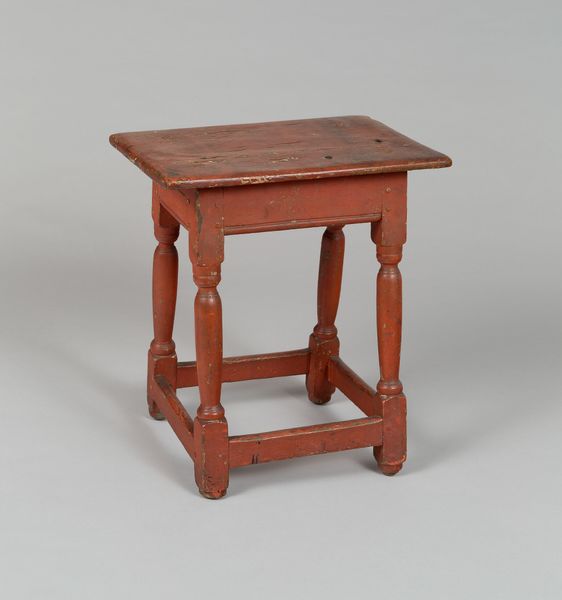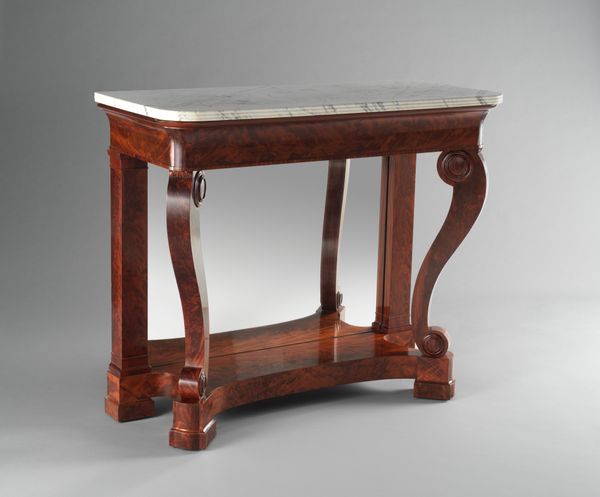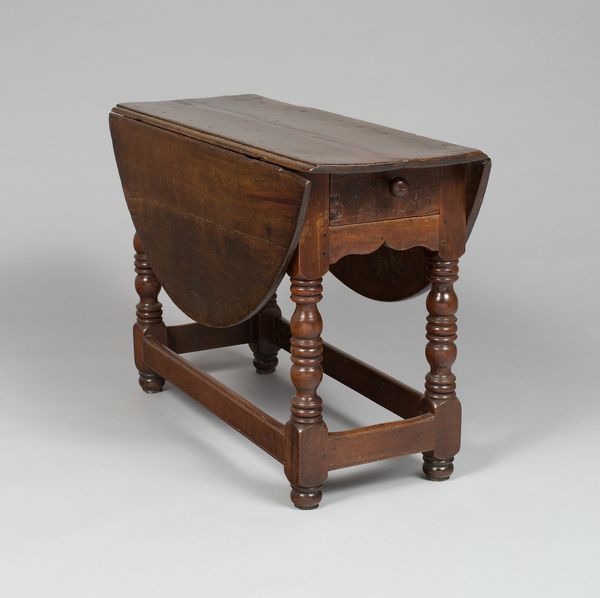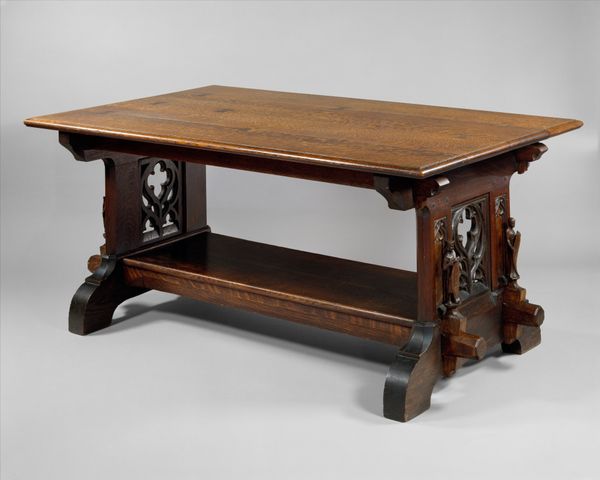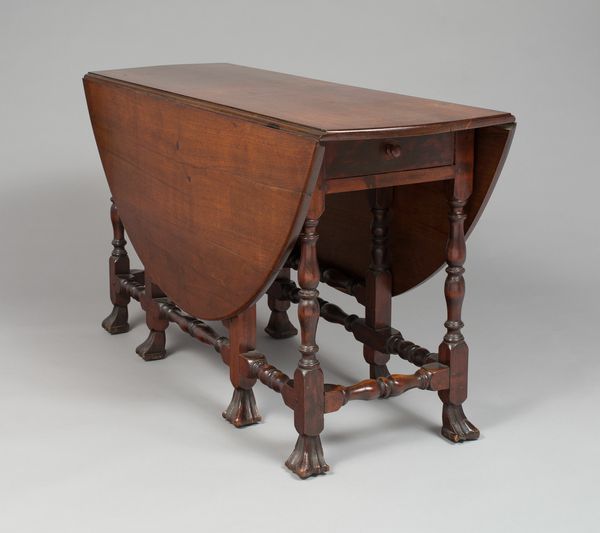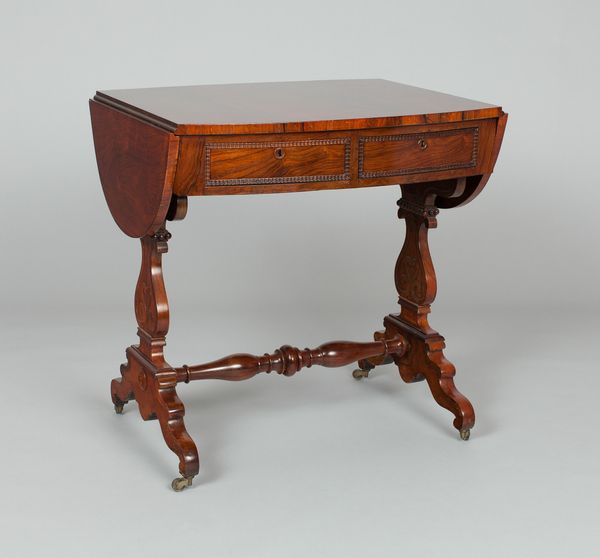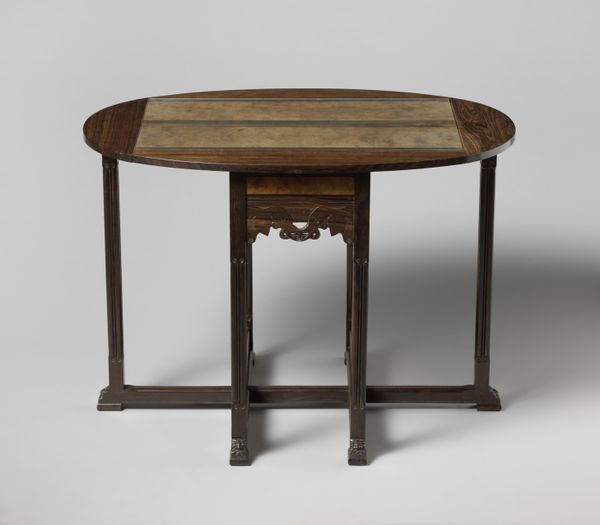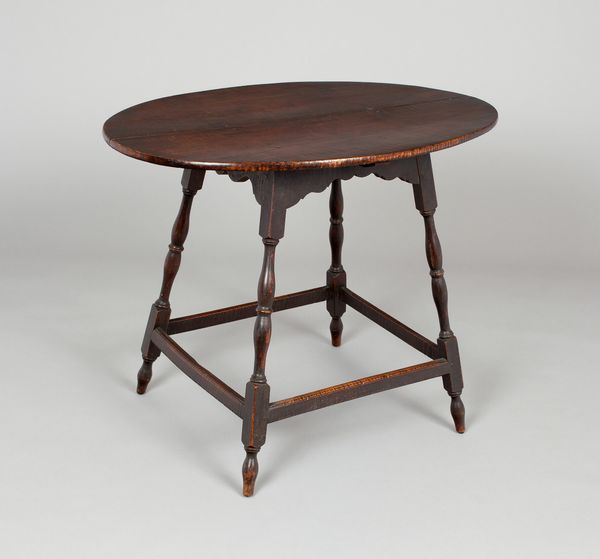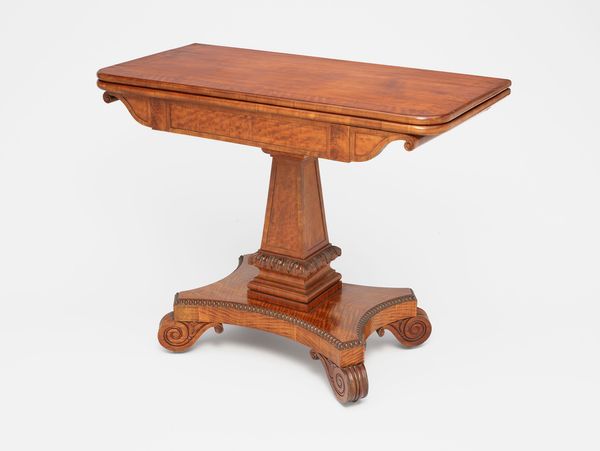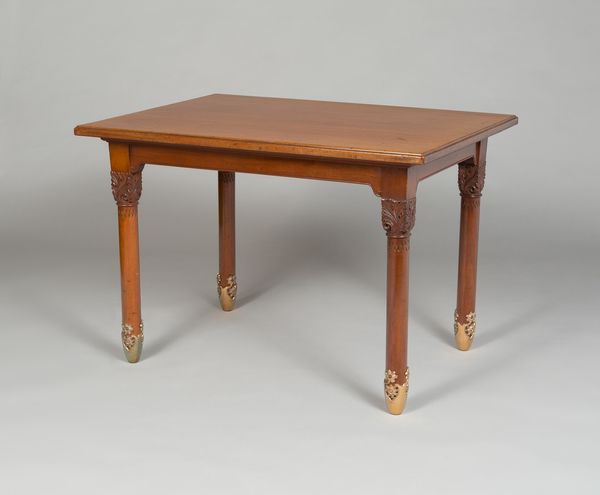
wood
#
furniture
#
classicism
#
wood
#
decorative-art
Dimensions: 48.2 × 38.7 × 24.8 cm (19 × 15 1/4 × 9 3/4 in.)
Copyright: Public Domain
Editor: Here we have a joint stool, believed to be crafted between 1680 and 1710 by an anonymous maker. It’s made of wood, and what strikes me most is how... well-worn it looks. How would you interpret a piece like this? Curator: I see this humble stool as a silent witness to history. Its worn surface speaks volumes, hinting at lives lived and social structures of the late 17th and early 18th centuries. Think about the act of sitting during that time. Who had access to such a basic comfort, and what did it mean for social hierarchy? Editor: So, something as simple as a stool embodies social power dynamics? Curator: Precisely. While it’s tagged as "decorative art," I resist that separation. This isn't just a decorative object, but a functional item reflecting daily life, and access to resources. Consider who crafted it, likely someone from a specific class or possibly even an indentured servant or enslaved person whose labor contributed to its creation, yet who would never have been seated upon it. Editor: That shifts my perspective completely. I was just thinking about its classical design. Curator: The “classicism” label is telling, isn’t it? But whose classicism are we talking about? Elites, or those who could at least mimic wealth? Doesn't the idea of classicism serve to legitimize certain power structures by invoking a romanticized, often exclusionary, past? Editor: I never considered the classicism tag that way before! Now I see the stool, not just as furniture, but almost as a kind of document about unequal labor. Curator: And that is exactly the type of question that these older works encourage us to ask! Every piece tells a story, and the history embedded into this "simple" stool proves it.
Comments
No comments
Be the first to comment and join the conversation on the ultimate creative platform.
